Short-Term Pulmonary Toxicity Assessment of Pre- and Post-incinerated Organomodified Nanoclay in Mice
- PMID: 29451776
- PMCID: PMC6357971
- DOI: 10.1021/acsnano.7b07281
Short-Term Pulmonary Toxicity Assessment of Pre- and Post-incinerated Organomodified Nanoclay in Mice
Abstract
Organomodified nanoclays (ONCs) are increasingly used as filler materials to improve nanocomposite strength, wettability, flammability, and durability. However, pulmonary risks associated with exposure along their chemical lifecycle are unknown. This study's objective was to compare pre- and post-incinerated forms of uncoated and organomodified nanoclays for potential pulmonary inflammation, toxicity, and systemic blood response. Mice were exposed via aspiration to low (30 μg) and high (300 μg) doses of preincinerated uncoated montmorillonite nanoclay (CloisNa), ONC (Clois30B), their respective incinerated forms (I-CloisNa and I-Clois30B), and crystalline silica (CS). Lung and blood tissues were collected at days 1, 7, and 28 to compare toxicity and inflammation indices. Well-dispersed CloisNa caused a robust inflammatory response characterized by neutrophils, macrophages, and particle-laden granulomas. Alternatively, Clois30B, I-Clois30B, and CS high-dose exposures elicited a low grade, persistent inflammatory response. High-dose Clois30B exposure exhibited moderate increases in lung damage markers and a delayed macrophage recruitment cytokine signature peaking at day 7 followed by a fibrotic tissue signature at day 28, similar to CloisNa. I-CloisNa exhibited acute, transient inflammation with quick recovery. Conversely, high-dose I-Clois30B caused a weak initial inflammatory signal but showed comparable pro-inflammatory signaling to CS at day 28. The data demonstrate that ONC pulmonary toxicity and inflammatory potential relies on coating presence and incineration status in that coated and incinerated nanoclay exhibited less inflammation and granuloma formation than pristine montmorillonite. High doses of both pre- and post-incinerated ONC, with different surface morphologies, may harbor potential pulmonary health hazards over long-term occupational exposures.
Keywords: inflammation; life cycle; nanoparticles; pulmonary; toxicity.
Conflict of interest statement
The authors declare no competing financial interest.
Figures
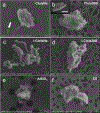
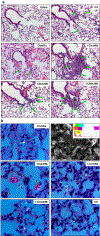
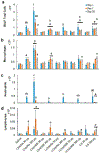


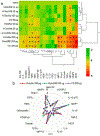
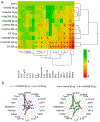
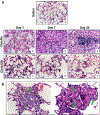
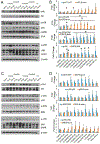
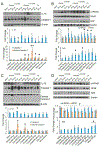
Similar articles
-
In vitro inflammation and toxicity assessment of pre- and post-incinerated organomodified nanoclays to macrophages using high-throughput screening approaches.Part Fibre Toxicol. 2024 Mar 21;21(1):16. doi: 10.1186/s12989-024-00577-7. Part Fibre Toxicol. 2024. PMID: 38509617 Free PMC article.
-
Impacts of Organomodified Nanoclays and Their Incinerated Byproducts on Bronchial Cell Monolayer Integrity.Chem Res Toxicol. 2019 Dec 16;32(12):2445-2458. doi: 10.1021/acs.chemrestox.9b00277. Epub 2019 Nov 19. Chem Res Toxicol. 2019. PMID: 31698904 Free PMC article.
-
Organomodified nanoclays induce less inflammation, acute phase response, and genotoxicity than pristine nanoclays in mice lungs.Nanotoxicology. 2020 Sep;14(7):869-892. doi: 10.1080/17435390.2020.1771786. Epub 2020 Jun 13. Nanotoxicology. 2020. PMID: 32536294
-
A mechanistic review of silica-induced inhalation toxicity.Inhal Toxicol. 2015;27(8):363-77. doi: 10.3109/08958378.2015.1066905. Epub 2015 Jul 21. Inhal Toxicol. 2015. PMID: 26194035 Review.
-
Is pulmonary inflammation a valid predictor of particle induced lung pathology? The case of amorphous and crystalline silicas.Toxicol Lett. 2024 Aug;399 Suppl 1:18-30. doi: 10.1016/j.toxlet.2023.07.012. Epub 2023 Jul 14. Toxicol Lett. 2024. PMID: 37454774 Review.
Cited by
-
Understanding the Functional Impact of VOC-Ozone Mixtures on the Chemistry of RNA in Epithelial Lung Cells.Res Rep Health Eff Inst. 2020 Jul;2020(201):201. Res Rep Health Eff Inst. 2020. PMID: 32845096 Free PMC article.
-
In vitro inflammation and toxicity assessment of pre- and post-incinerated organomodified nanoclays to macrophages using high-throughput screening approaches.Part Fibre Toxicol. 2024 Mar 21;21(1):16. doi: 10.1186/s12989-024-00577-7. Part Fibre Toxicol. 2024. PMID: 38509617 Free PMC article.
-
Inorganic/organic combination: Inorganic particles/polymer composites for tissue engineering applications.Bioact Mater. 2023 Jan 11;24:535-550. doi: 10.1016/j.bioactmat.2023.01.003. eCollection 2023 Jun. Bioact Mater. 2023. PMID: 36714332 Free PMC article.
-
Impacts of Organomodified Nanoclays and Their Incinerated Byproducts on Bronchial Cell Monolayer Integrity.Chem Res Toxicol. 2019 Dec 16;32(12):2445-2458. doi: 10.1021/acs.chemrestox.9b00277. Epub 2019 Nov 19. Chem Res Toxicol. 2019. PMID: 31698904 Free PMC article.
-
Characterization of aerosolized particles from nanoclay-enabled composites during manipulation processes.Environ Sci Nano. 2020 May 21;7:1539-1553. doi: 10.1039/c9en01211g. Environ Sci Nano. 2020. PMID: 37205161 Free PMC article.
References
-
- Patel HA; Somani RS; Bajaj HC; Jasra RV Nanoclays for Polymer Nanocomposites, Paints, Inks, Greases and Cosmetics Formulations, Drug Delivery Vehicle and Waste Water Treatment. Bull. Mater. Sci 2006, 29, 133–145.
-
- Anandhan S; Bandyopadhyay S Polymer Nanocomposites: From Synthesis to Applications. In Nanocomposites and polymers with analytical methods; Cuppoletti, J., Ed.; InTechOpen, 2011; pp 1–27.
-
- Camargo PHC; Satyanarayana KG; Wypych F Nanocomposites: Synthesis, Structure, Properties and New Application Opportunities. Mater. Res 2009, 12, 1–39.
-
- Mackevica A; Foss Hansen S Release of Nanomaterials from Solid Nanocomposites and Consumer Exposure Assessment- A Forward-Looking Review. Nanotoxicology 2016, 10, 641–653. - PubMed
Publication types
MeSH terms
Substances
Grants and funding
LinkOut - more resources
Full Text Sources
Other Literature Sources
Medical

